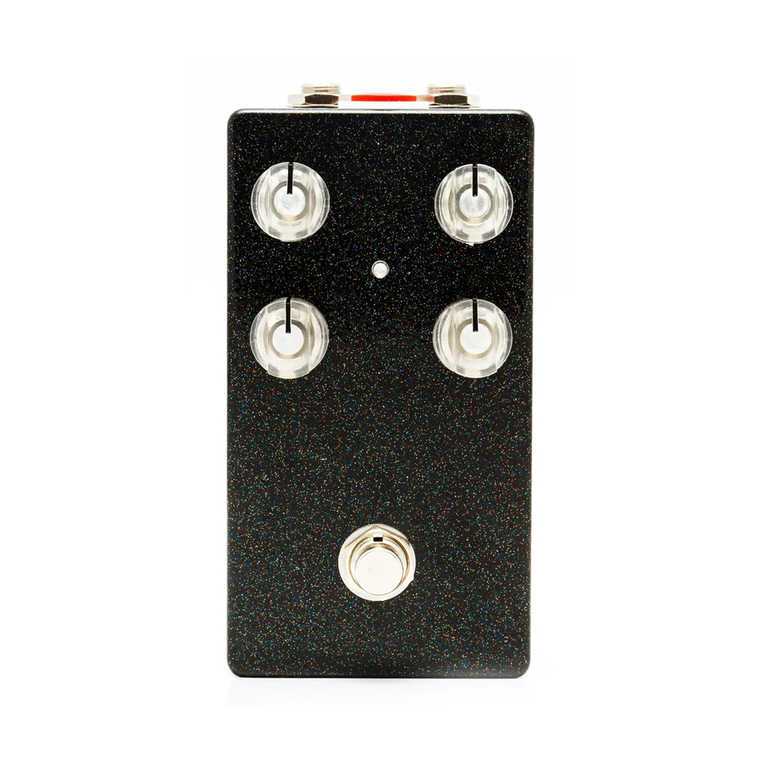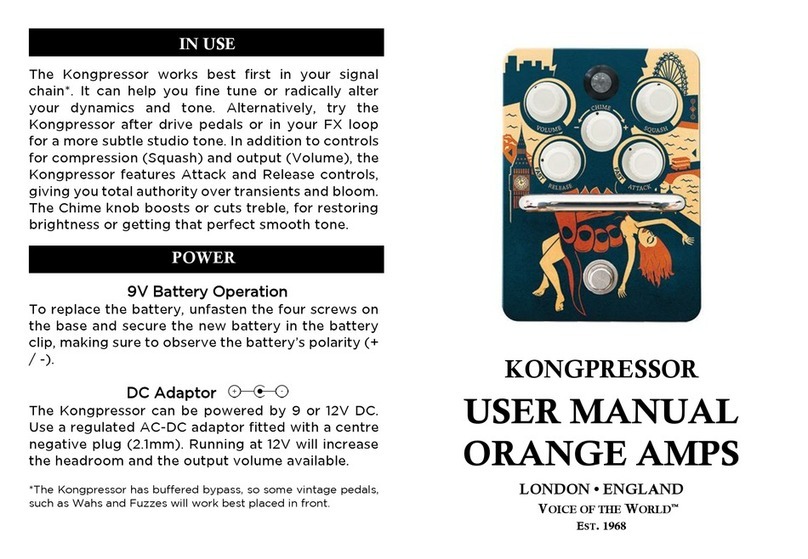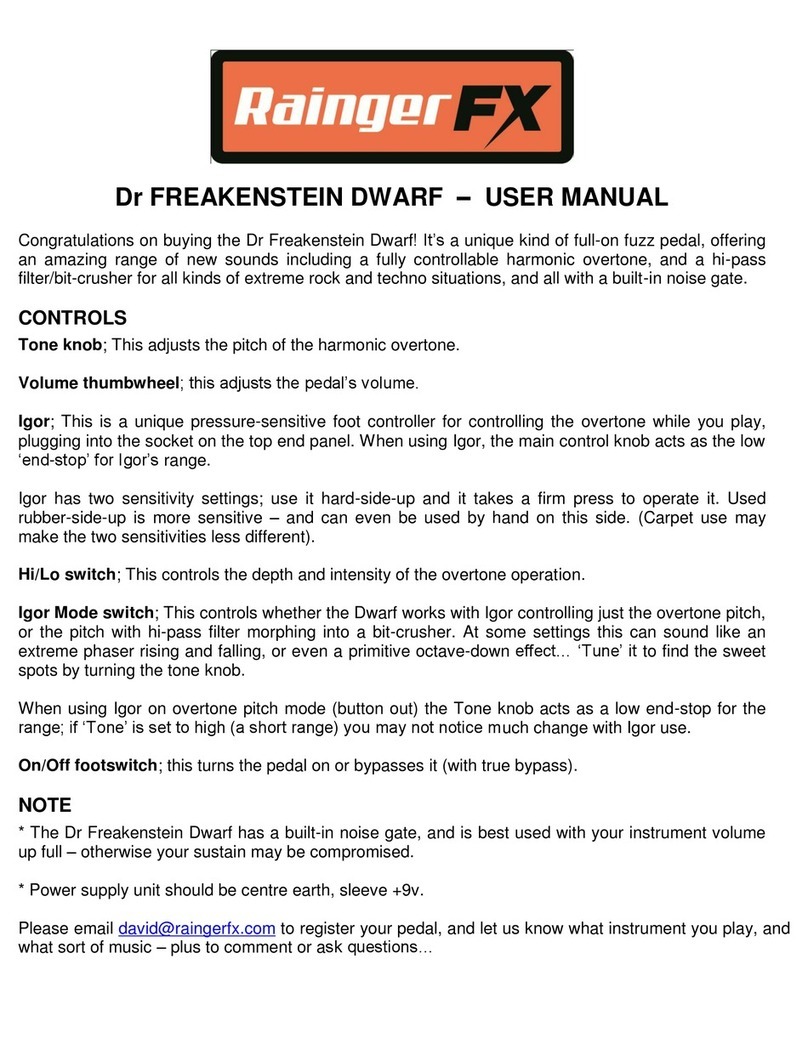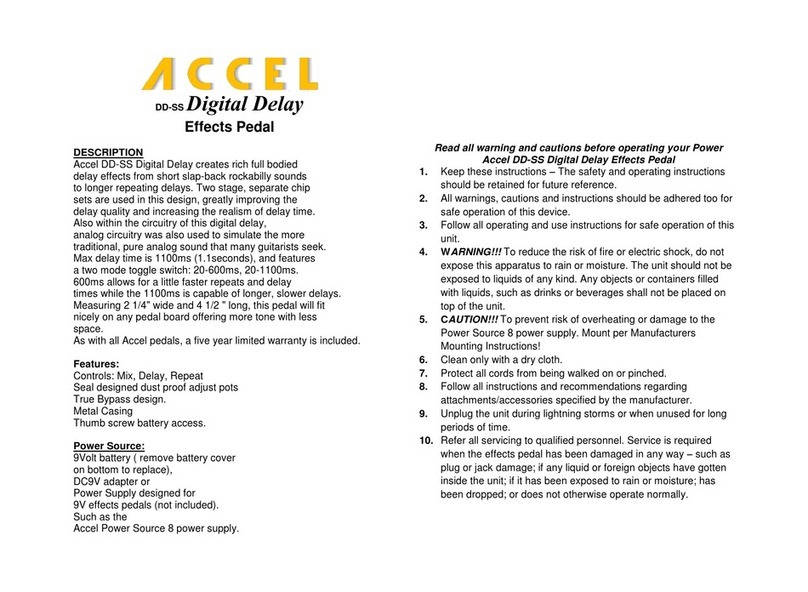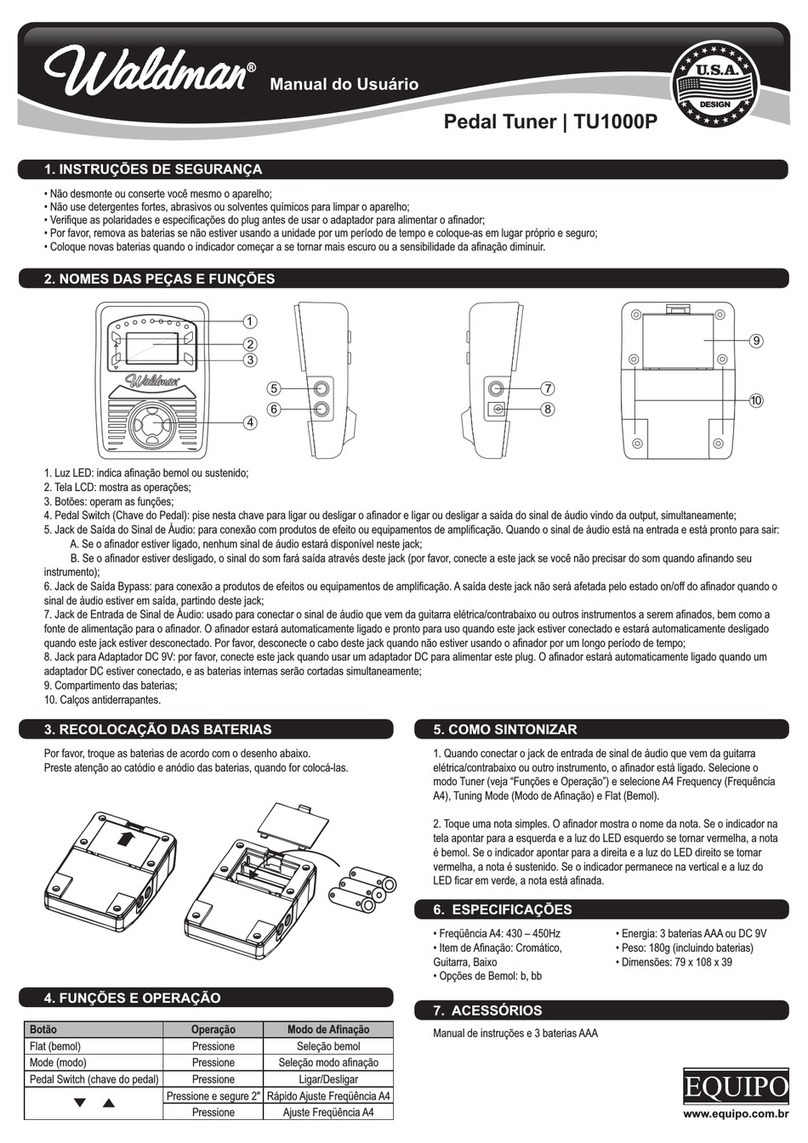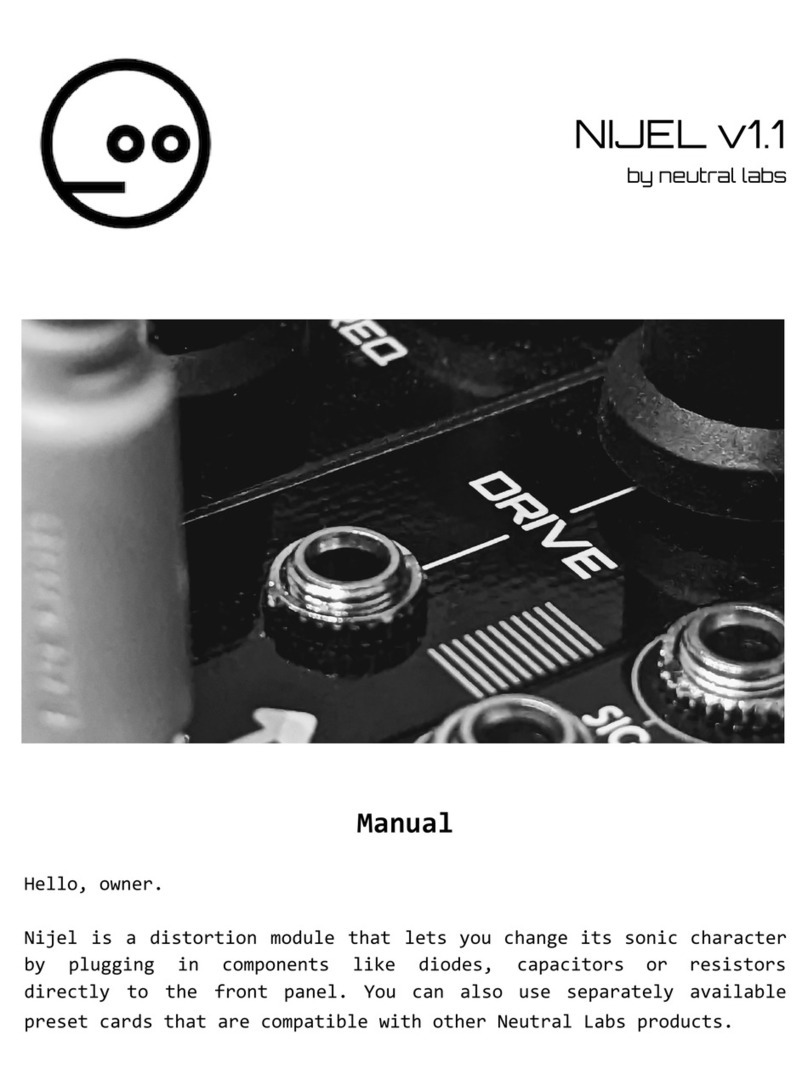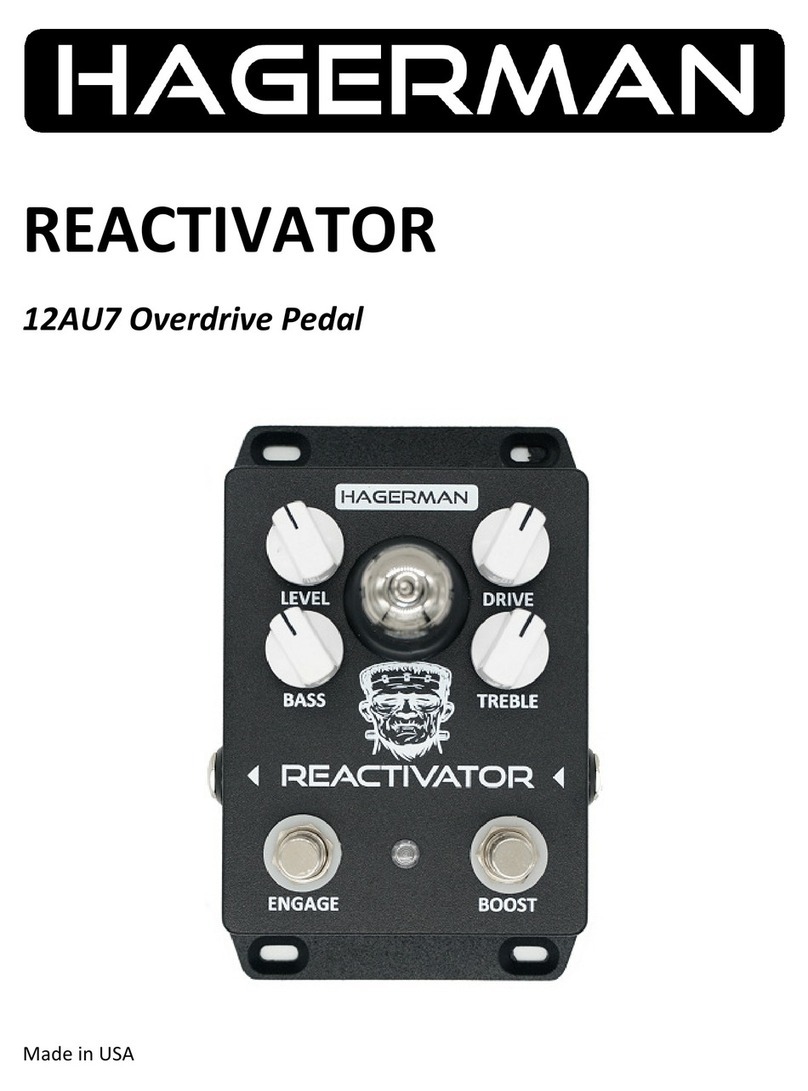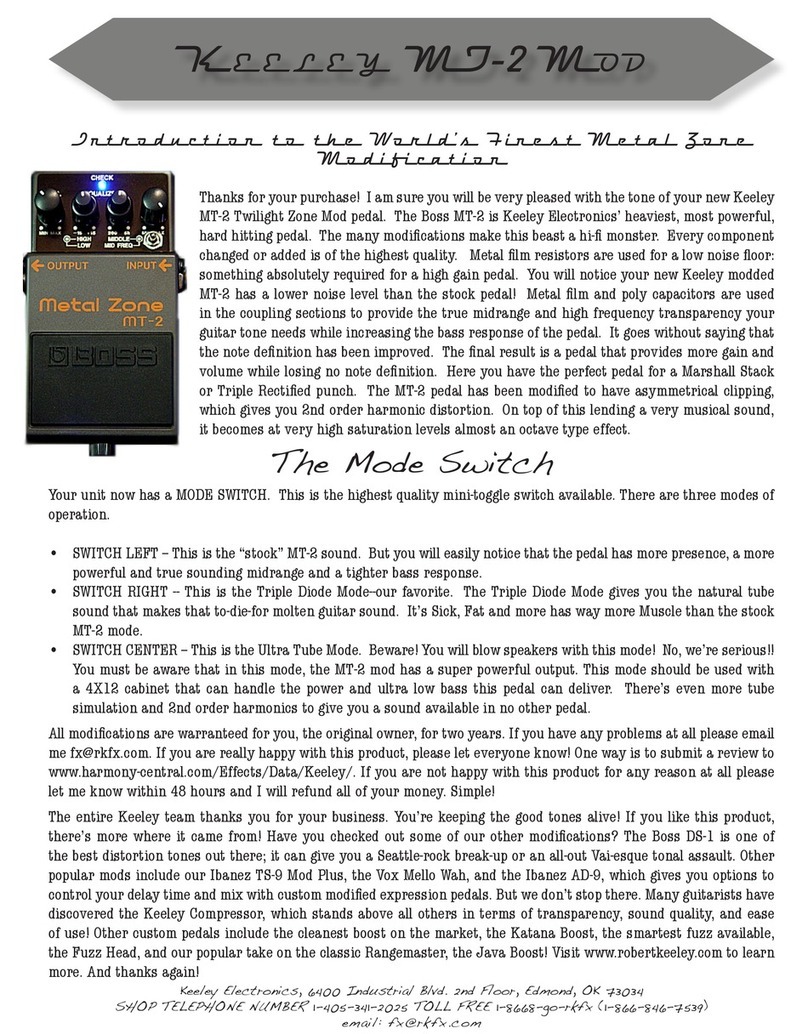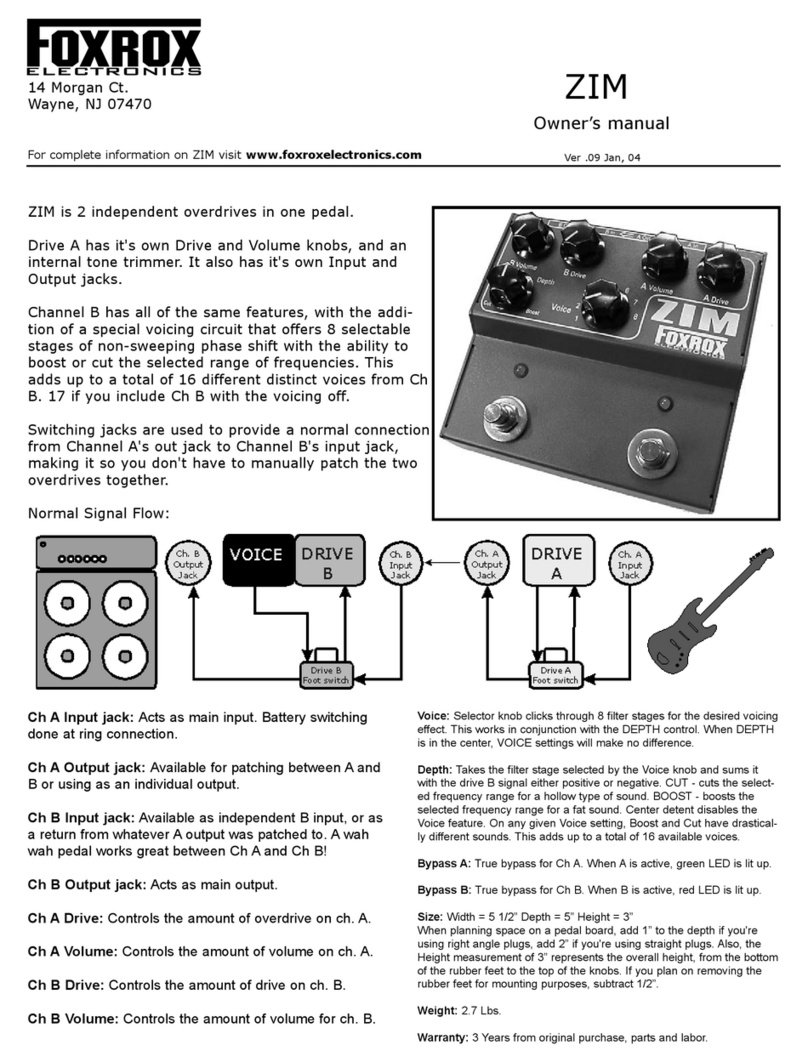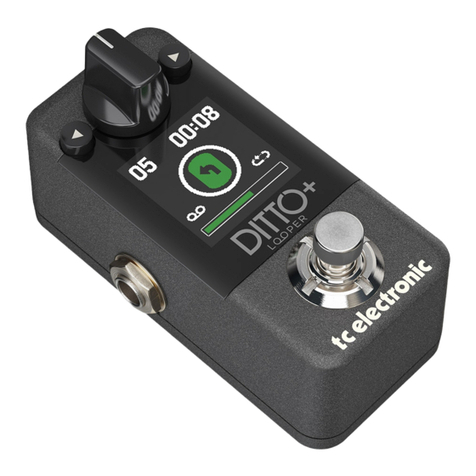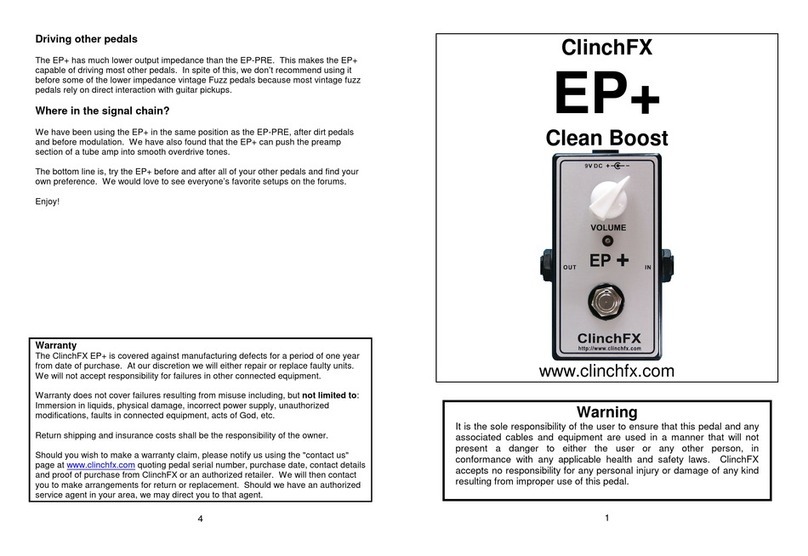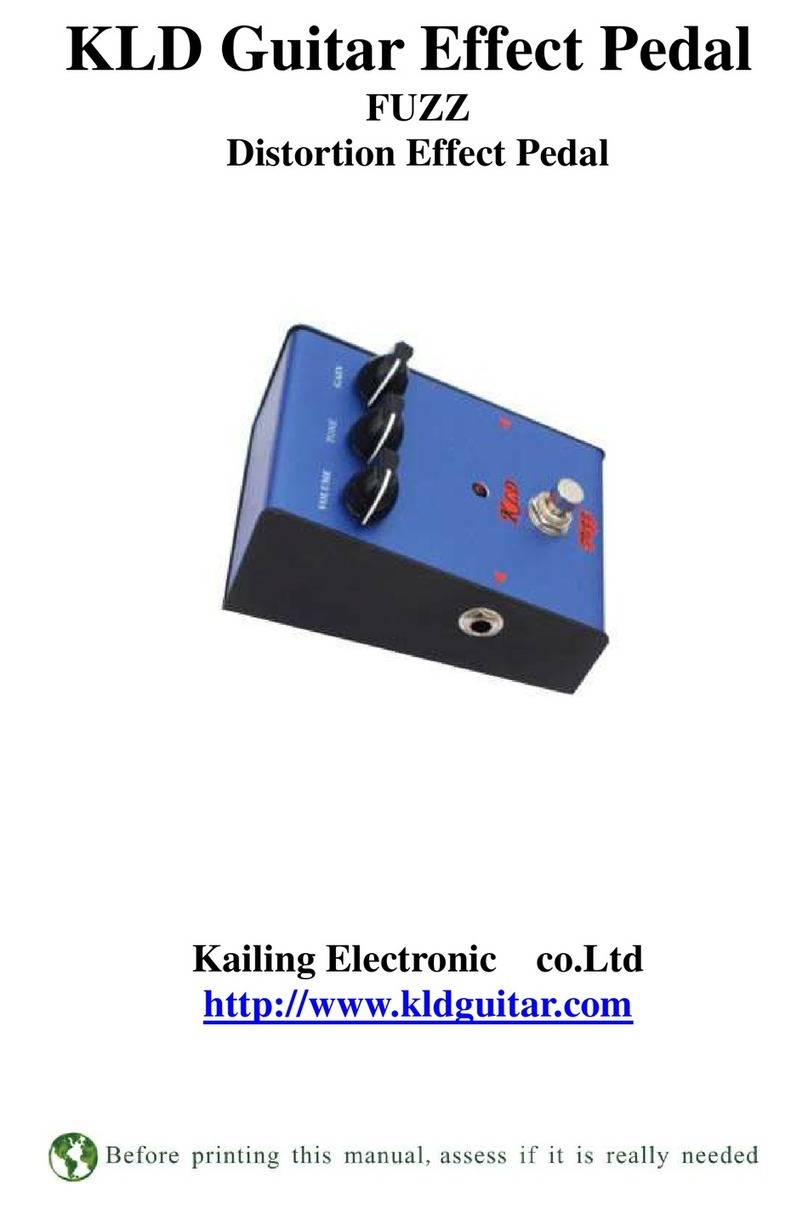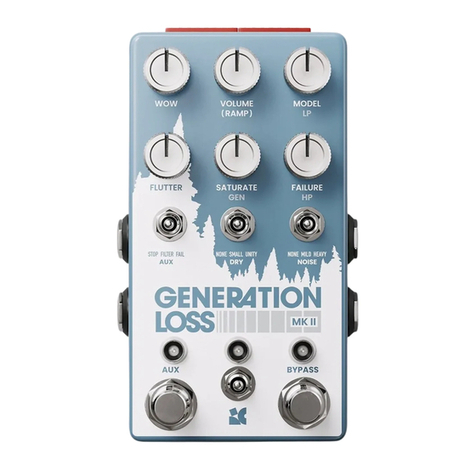GCI Brutalist Jr. User manual

GCI BRUTALIST JR. BUILD GUIDE
The Brutalist Jr. is the DIY little brother to the GCI Brutalist, a high powered distortion pedal loosely based on the Providence
Stampede SDT-1. It runs on 9v DC power or 9v battery and has controls for volume, loudness (a high and low boost chained into
one control), and gain (distortion.) Components have been carefully chosen to provide a powerful distorted sound when placed in
front of a semi-clean tube amp, but please feel free to experiment with component choices. Alternate resistors, capacitors, and
diodes can change the tonal and gain characteristics of the circuit. External switches can be added to make these choices
switchable.
If you are inexperienced with soldering, please watch YouTube tutoritals and get comfortable with “tinning” wire ends and making
solder connections to PCBs and pots before beginning this build.
This kit is designed was designed and prototyped in the USA. Consequently, these instructions are in English units. Apologies to
any non-US builders who need to convert to metric from this antiquated system.
If you enjoy building this kit and find it useful, please show us your work by tagging www.facebook.com/KurtBallou/ or
www.instagram.com/godcitymusic/ and use the hashtags #godcityinstruments and #brutalistjr.

KIT
Feel free to buy parts a la carte from any electronics supplier, but Small Bear Electronics http://www.smallbear-
electronics.mybigcommerce.com/ have been kind enough to create a parts kit for this project. Full kit (includes everything except
PCB) and mini kit (includes everything except PCB, enclosure, and knobs) available here: http://smallbear-
electronics.mybigcommerce.com/kit-the-gc-brutalist-jr/
MODS
At the end of this build guide is a section of suggested mods. Remember to add components for desired mods when ordering
parts. For mods which require additional pots and/or switches, consider using a larger enclosure such as the 1790NS.
ENCLOSURE
The kit includes a 125BB size enclosure that will need to be drilled per instructions on the attached drill template PDF. If a
different sized enclosure is chosen, adapt the drill template for that enclosure, taking care to provide clearance for pots, jacks, LED,
and switches.

COMPONENTS CHECKLIST
Resistors
Film &
Ceramic
Capacitors
Electrolytic
Capacitors
Op Amps
Part
Value
Color Code
Part
Value
Code
Part
Value
Part
Value
R1
2.2M
Red Red Black Yellow Brown
C1
22n
223
C3
22u
IC1
TL072P
R2
2.2M
Red Red Black Yellow Brown
C2
2.2n
222
C5
3.3u
IC2
TL072P
R3
1k
Brown Black Black Brown Brown
C4
330p
331
C15
100u
R4
1k
Brown Black Black Brown Brown
C6
330p
331
C16
100u
Potentiometers
R5
4.7k
Yellow Violet Black Brown Brown
C7
220n
224
Part
Value
R6
120R
Brown Red Black Black Brown
C8
27n
273
Diodes
DISTORTION
A50K
R7
2.2k
Red Red Black Brown Brown
C9
300p
301
Part
Value
LOUDNESS
B1M
R8
2.2k
Red Red Black Brown Brown
C10
270p
271
D1
1n914
VOLUME
A100K
R9
100k
Brown Black Black Orange Brown
C11
100n
104
D2
1n914
R10
18k
Brown Grey Black Red Brown
C12
1u
105
D3
1N5818
R11
120k
Brown Red Black Orange Brown
C13
270p
271
R12
10k
Brown Black Black Red Brown
C14
1u
105
R13
22k
Red Red Black Red Brown
R14
2.2k
Red Red Black Brown Brown
R15
12k
Brown Red Black Red Brown
R16
100k
Brown Black Black Orange Brown
R17
10k
Brown Black Black Red Brown
R18
10k
Brown Black Black Red Brown
R19
10k
Brown Black Black Red Brown

HARDWARE AND TOOLS
Hardware
Tools
Part
Qty
Value
Soldering Iron
Input jack
1
1/4" stereo
Rosin core solder
Output jack
1
1/4" mono
Solder sucker or wick
Footswitch
1
3pdt
Flat and phillips head screw drivers
Enclosure
1
125BB
Needle nose pliers
Battery snap
1
6" #24 leads
Side cutters
DC jack
1
2.1mm
Wire strippers
LED
1
5mm Red
Pliers or socket set
LED bezel
1
Black
Hand drill or drill press with bits
IC socket
2
Dip 8
½” counter sink
Wire
1
22ga sample
Multi-meter
Feet
4
Rubber
Center punch and hammer
Work gloves
New 9V battery
Ruler (inches)

GETTING STARTED
!
Sort and clearly identify all components and hardware. Be sure not to lose anything because the kit does not include any extras.

NOTE: These instructions refer to the “Kurt Ballou” side of the PCB as the “front side.” All IC’s, diodes, capacitors, and resistors are
connected to the front side. When the pedal is completed, this side will still be visible when the back of the enclosure is removed.
These instructions refer to the face of the pedal enclosure, where the knobs and switches are as the “front side” and the removable
bottom, where the PCB is located the “back side.” Note that in the final assembly, the “front” of the enclosure will face up, and the
“front” of the PCB will face down.
!

POPULATE THE PCB
Step 1: Add the diodes. First find the 1N5818 diode. This provides protection against incorrect power supply polarity. Next find a
pair of 1N914 diodes. These are the clipping diodes. Bend each diode’s legs at 90 degrees and install them through the front side
of the PCB. The 1N5818 goes in the D3 slot and the 1N914s go in the D1 and D2 slots. Be sure to match the end of the diode with
the stripe to the stripe on the PCB next to the square pad. Proper orientation of diodes is critical. Then, from the back side of the
PCB, bend their legs out to hold them in place until it’s time to solder. Solder all diodes and trim the excess length of the legs with
a side cutter, being sure not to scratch or damage the PCB.
!

!

!

!

!

Step 2: Add the resistors. These are non-polarized and orientation is not critical. Sort the resistors, then, one by one, bend the legs
at the resistor bodies to 90 degrees and insert them into the PCB from the front side. Then, from, the back side, bend their legs out
to hold them in place until it’s time to solder. Solder all resistors and trim the excess length of the legs with a side cutter, being sure
not to scratch or damage the PCB.
!

!

!

Step 3: Add the 8 pin IC sockets. ONLY SOLDER THE SOCKET! The IC’s get inserted into the sockets after the sockets had been
soldered. Insert the sockets into the PCB from the front side. Then, from the back side, bend their legs out to hold them in place
until they are soldered. The notch in the sockets should align with the notches screen printed on the PCB. There will be notches or
dots on the ICs that will also align with these notches. Make sure that the ICs are firmly seated in the sockets. Carefully bend the
legs in to align with the socket if necessary. Again, DO NOT SOLDER THE ICs.
!

!

Step 4: Add the film and the ceramic disc capacitors. These are non-polarized and orientation is not critical. Sort the capacitors
and, one by one, insert them to the PCB from the front side. Then, from the back side, bend their legs out to hold them in place
until it’s time to solder. Solder all capacitors and trim the excess length of the legs with a side cutter, being sure not to scratch or
damage the PCB.
!

!
Table of contents
Other GCI Music Pedal manuals


